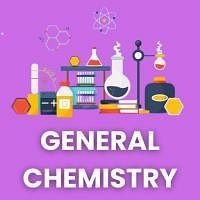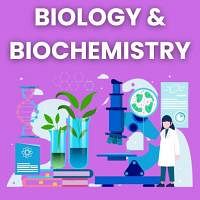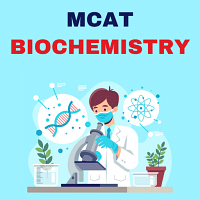MCAT Exam > MCAT Questions > Under which of the following conditions would...
Start Learning for Free
Under which of the following conditions would one expect ATP hydrolysis to be non-spontaneous?
- a)A very basic environment (high concentration of proton acceptors)
- b)A temperature slightly below 37 ∘
- c)No enzymes available to lower activation energy
- d)ATP concentrations very far below equilibrium concentration, and ADP concentrations very far above equilibrium concentration
Correct answer is option 'D'. Can you explain this answer?
| FREE This question is part of | Download PDF Attempt this Test |
Most Upvoted Answer
Under which of the following conditions would one expect ATP hydrolysi...
ATP hydrolysis is typically a highly spontaneous reaction, releasing energy and driving cellular processes. However, if the concentrations of ATP are significantly lower than the equilibrium concentration and the concentrations of ADP are significantly higher than the equilibrium concentration, the reaction may not proceed spontaneously.
In a non-equilibrium state where ATP concentrations are very low and ADP concentrations are very high, the reaction would not be thermodynamically favorable because the standard free energy change (ΔG°) for ATP hydrolysis assumes equilibrium concentrations. If the concentrations deviate significantly from equilibrium, the reaction may no longer be spontaneous.
Attention MCAT Students!
To make sure you are not studying endlessly, EduRev has designed MCAT study material, with Structured Courses, Videos, & Test Series. Plus get personalized analysis, doubt solving and improvement plans to achieve a great score in MCAT.

|
Explore Courses for MCAT exam
|

|
Similar MCAT Doubts
Under which of the following conditions would one expect ATP hydrolysis to be non-spontaneous?a)A very basic environment (high concentration of proton acceptors)b)A temperature slightly below 37 c)No enzymes available to lower activation energyd)ATP concentrations very far below equilibrium concentration, and ADP concentrations very far above equilibrium concentrationCorrect answer is option 'D'. Can you explain this answer?
Question Description
Under which of the following conditions would one expect ATP hydrolysis to be non-spontaneous?a)A very basic environment (high concentration of proton acceptors)b)A temperature slightly below 37 c)No enzymes available to lower activation energyd)ATP concentrations very far below equilibrium concentration, and ADP concentrations very far above equilibrium concentrationCorrect answer is option 'D'. Can you explain this answer? for MCAT 2024 is part of MCAT preparation. The Question and answers have been prepared according to the MCAT exam syllabus. Information about Under which of the following conditions would one expect ATP hydrolysis to be non-spontaneous?a)A very basic environment (high concentration of proton acceptors)b)A temperature slightly below 37 c)No enzymes available to lower activation energyd)ATP concentrations very far below equilibrium concentration, and ADP concentrations very far above equilibrium concentrationCorrect answer is option 'D'. Can you explain this answer? covers all topics & solutions for MCAT 2024 Exam. Find important definitions, questions, meanings, examples, exercises and tests below for Under which of the following conditions would one expect ATP hydrolysis to be non-spontaneous?a)A very basic environment (high concentration of proton acceptors)b)A temperature slightly below 37 c)No enzymes available to lower activation energyd)ATP concentrations very far below equilibrium concentration, and ADP concentrations very far above equilibrium concentrationCorrect answer is option 'D'. Can you explain this answer?.
Under which of the following conditions would one expect ATP hydrolysis to be non-spontaneous?a)A very basic environment (high concentration of proton acceptors)b)A temperature slightly below 37 c)No enzymes available to lower activation energyd)ATP concentrations very far below equilibrium concentration, and ADP concentrations very far above equilibrium concentrationCorrect answer is option 'D'. Can you explain this answer? for MCAT 2024 is part of MCAT preparation. The Question and answers have been prepared according to the MCAT exam syllabus. Information about Under which of the following conditions would one expect ATP hydrolysis to be non-spontaneous?a)A very basic environment (high concentration of proton acceptors)b)A temperature slightly below 37 c)No enzymes available to lower activation energyd)ATP concentrations very far below equilibrium concentration, and ADP concentrations very far above equilibrium concentrationCorrect answer is option 'D'. Can you explain this answer? covers all topics & solutions for MCAT 2024 Exam. Find important definitions, questions, meanings, examples, exercises and tests below for Under which of the following conditions would one expect ATP hydrolysis to be non-spontaneous?a)A very basic environment (high concentration of proton acceptors)b)A temperature slightly below 37 c)No enzymes available to lower activation energyd)ATP concentrations very far below equilibrium concentration, and ADP concentrations very far above equilibrium concentrationCorrect answer is option 'D'. Can you explain this answer?.
Solutions for Under which of the following conditions would one expect ATP hydrolysis to be non-spontaneous?a)A very basic environment (high concentration of proton acceptors)b)A temperature slightly below 37 c)No enzymes available to lower activation energyd)ATP concentrations very far below equilibrium concentration, and ADP concentrations very far above equilibrium concentrationCorrect answer is option 'D'. Can you explain this answer? in English & in Hindi are available as part of our courses for MCAT.
Download more important topics, notes, lectures and mock test series for MCAT Exam by signing up for free.
Here you can find the meaning of Under which of the following conditions would one expect ATP hydrolysis to be non-spontaneous?a)A very basic environment (high concentration of proton acceptors)b)A temperature slightly below 37 c)No enzymes available to lower activation energyd)ATP concentrations very far below equilibrium concentration, and ADP concentrations very far above equilibrium concentrationCorrect answer is option 'D'. Can you explain this answer? defined & explained in the simplest way possible. Besides giving the explanation of
Under which of the following conditions would one expect ATP hydrolysis to be non-spontaneous?a)A very basic environment (high concentration of proton acceptors)b)A temperature slightly below 37 c)No enzymes available to lower activation energyd)ATP concentrations very far below equilibrium concentration, and ADP concentrations very far above equilibrium concentrationCorrect answer is option 'D'. Can you explain this answer?, a detailed solution for Under which of the following conditions would one expect ATP hydrolysis to be non-spontaneous?a)A very basic environment (high concentration of proton acceptors)b)A temperature slightly below 37 c)No enzymes available to lower activation energyd)ATP concentrations very far below equilibrium concentration, and ADP concentrations very far above equilibrium concentrationCorrect answer is option 'D'. Can you explain this answer? has been provided alongside types of Under which of the following conditions would one expect ATP hydrolysis to be non-spontaneous?a)A very basic environment (high concentration of proton acceptors)b)A temperature slightly below 37 c)No enzymes available to lower activation energyd)ATP concentrations very far below equilibrium concentration, and ADP concentrations very far above equilibrium concentrationCorrect answer is option 'D'. Can you explain this answer? theory, EduRev gives you an
ample number of questions to practice Under which of the following conditions would one expect ATP hydrolysis to be non-spontaneous?a)A very basic environment (high concentration of proton acceptors)b)A temperature slightly below 37 c)No enzymes available to lower activation energyd)ATP concentrations very far below equilibrium concentration, and ADP concentrations very far above equilibrium concentrationCorrect answer is option 'D'. Can you explain this answer? tests, examples and also practice MCAT tests.

|
Explore Courses for MCAT exam
|

|
Signup for Free!
Signup to see your scores go up within 7 days! Learn & Practice with 1000+ FREE Notes, Videos & Tests.
























